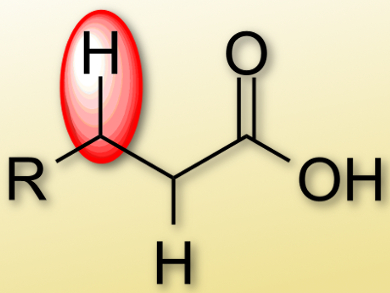Activation of relatively inert C–H bonds is one of the most important challenges in organic chemistry. A common target is the β-C–H activation of carbonyl compounds. While there are transition metal catalysts that can promote these reactions, organocatalysts such as N-heterocyclic carbenes (NHCs) provide a “greener” approach, often with good yields and high stereoselectivity. However, the detailed mechanism is not fully understood as of yet.
Donghui Wei, Mingsheng Tang, and colleagues, Zhengzhou University, China, have investigated possible mechanisms and the origin of the stereoselectivity in the NHC-catalyzed addition of an ester (pictured) to an enone and a subsequent cyclization to give a cyclopentene. The team used Density Functional Theory (DFT) calculations to determine the likely mechanism, which turned out to be an eight-step process, including deprotonation of the carbonyl compound, a Michael addition, and an intramolecular aldol reaction.
According to a partial charge analysis, the NHC mainly promotes the reaction by strengthening the C–H bonds’ acidity. This is in contrast to previous studies, which pointed to NHCs working as Lewis base catalysts that mainly improved the nucleophilicity of the reactant. The results explain the stereoselectivity in terms of π-stacking between the NHC’s conjugated system and the enone’s phenyl substituent. The team hopes that the improved understanding of the reaction leads to better potential catalysts.
- N-Heterocyclic Carbene (NHC)-Catalyzed sp3 β-C–H Activation of Saturated Carbonyl Compounds: Mechanism, Role of NHC, and Origin of Stereoselectivity,
Yanyan Wang, Donghui Wei, Yang Wang, Wenjing Zhang, Mingsheng Tang,
ACS Catal. 2015.
DOI: 10.1021/acscatal.5b01710




